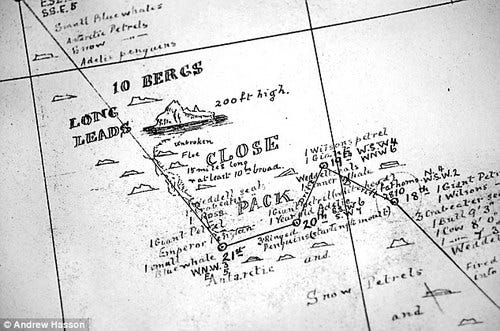This post was originally published to Daniel Jefferies' Medium blog feed.
Imagine you are going on an expedition. There is no map, you need to make one yourself. You are certain there are dangers but you have no idea where they might be or how they will threaten you. Oh yeah, forgot one thing, you aren’t even completely sure if the destination you want to get to even exists at all. But, if you can find it, you will be the first person to set foot there. You will make history. You will be in uncharted territory.
Does this sound like a great adventure? Are you wondering where to sign up? Does it sound like the worst idea ever?
This is what it feels like to create a company, in my experience. Managing and building the team that builds that company is the map making part. A map of undiscovered country. The company DNA.
I want to share with you how I have built these maps in the past. I’m not saying it is a perfect method but it has worked for me. Most of it is borrowed and stolen from lots of sources and folks that are far smarter then I am.
Lets start with a quick overview.
Priorities
You need to identify what it is that you want to make happen. Your goals.For my friend Joe and his company TrakGear, this would probably be something like “Signup x number of paying customers” In the beginning when you are small you should try to have a single goal. You don’t have many resources at that point so you need to focus them to make an impact.
Data
“You can’t manage what you don’t measure” is an old management adage that many attribute to Peter Drucker. Have a look at your priorities and choose a couple of key data points that will help you measure your progress toward the goal. Somebody in my friend Joe’s position may want to use Dave McClure’s excellent Metrics for Pirates talk as a starting point for what to measure since this is a well thought out framework for measuring web-based products like TrakGear.Rhythm
Almost all living things have rhythm; heartbeats, pulses, breathing, blinking. These rhythms give our bodies tiny goals to meet which all add up to the larger goal of keeping us alive. Businesses are the same. They need to get into a rhythm of tiny goals that feed the larger priority. These rhythms are things like how often you want to communicate with your customers, how often do you meet with your team, how often to release new versions of you product. This is an often overlooked piece of the puzzle but a critical one if you are to get into a productive flow with your team.Workplan
Now we’ve made it down to the practical stuff. The stuff you need to get done. Your workplan is all the things that you intend to do to make your priorities and goals happen. Why do we make our workplan last? Pretty simple actually. Because now our priorities, data and rhythm give us a framework to decide what makes it onto the to do list and what we leave off the list. Does this action directly lead to my priority? Will this action drive the data points that I’m measuring? Is this action part of my rhythm? If the answers to these questions are no then the action doesn’t make it onto the list. Be ruthless. Kill good ideas. Only let the great ones live.Hopefully that gives you a good sense of the framework. In the coming weeks I’m going to try to write a post each week (that’s a weekly rhythm friends) about a new component of the framework.
In the meantime, I need to ask for a favor. I want the next four posts to be as useful as possible. Also, being new to Medium I’d love to see the comment system in action from an authors perspective. So please be generous with your feedback. I will use that information to inform the rest of the series.



No comments:
Post a Comment